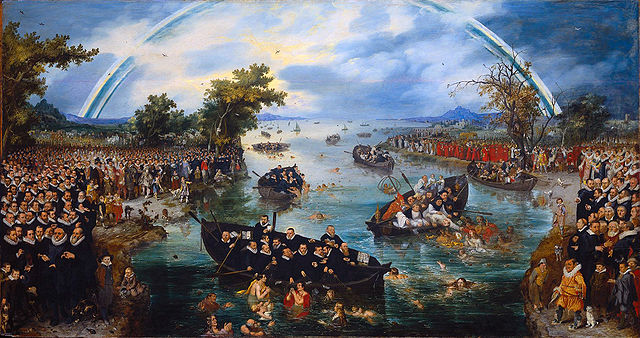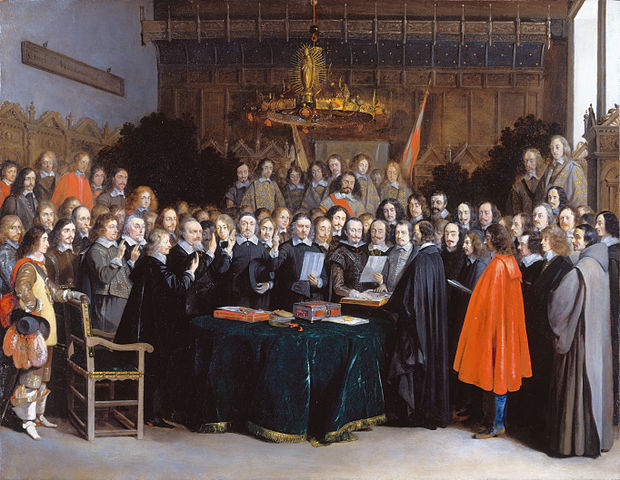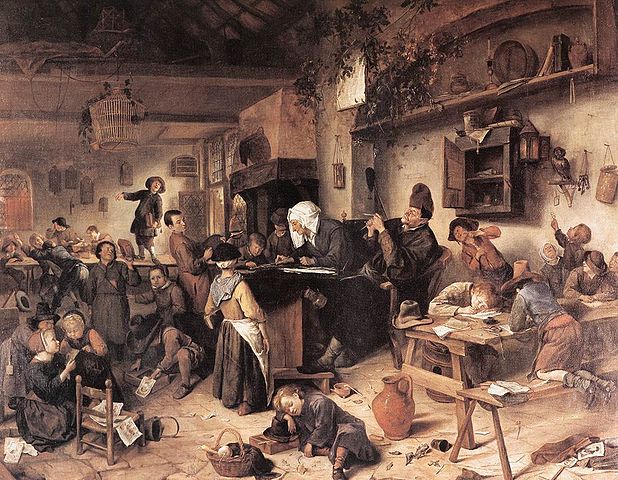Three featured paintings
The Fishers for Souls was painted in 1614 by Adriaen Pietersz van de Venne depicting the European religious climate as Comenius was entering the ministry.
Catholics and Protestants are fiercely competing for the souls of the people. A river divides the Protestants on the left from the Catholics on the right. Standing on the left bank are James I of England and Prince Maurice, son of the Prince of Orange, Holland. On the right bank are the Catholic Archduke, Albert of Austria, and his wife Isabella.
The rainbow symbolizes a temporary truce that prevailed at the time of the painting amidst the succession of religious wars that followed the Reformation. But the peace was short-lived. The last and worst of the religious wars, the Thirty Years’ War, broke out in 1618 and instead of fishing for souls there was fighting. The conflict was the stage against which the drama of Comenius’s life was played out. (Rijksmuseum Amsterdam.)

Peace of Westphalia. The horrible Thirty Years’ War which devastated so much of Europe was brought to an end with the Peace of Westphalia. Comenius had hoped and expected that provision would be made for the unity of the Brethren to return to their homeland in freedom and peace. But no provision was made for them in the negotiations and they were not able to return home. (Rijksmuseum Amsterdam/[T.Borsch])

The Village School. Jan Steen’s painting of the village school (around 1670) parodies local education in 17th-century Europe. Comenius had a lifelong passion to bring a new sense of order, purpose, and direction to the village classroom,
He thought globally and acted locally. He was at home with children, a gifted observer of their development, and an exceptionally skilled teacher who could make learning interesting, even enjoyable.
His educational reforms would earn him the title, “Father of Modern Education.”

By the editors
[Christian History originally published this article in Christian History Issue #13 in 1987]
Next articles
Church History in Brief
A capsule overview of the movement Jesus started, seen mostly from a Western perspective.
Bruce L. ShelleyWho Am I
About the famous prison poem that we cannot post because of copyright considerations.
Dietrich Bonhoeffer


